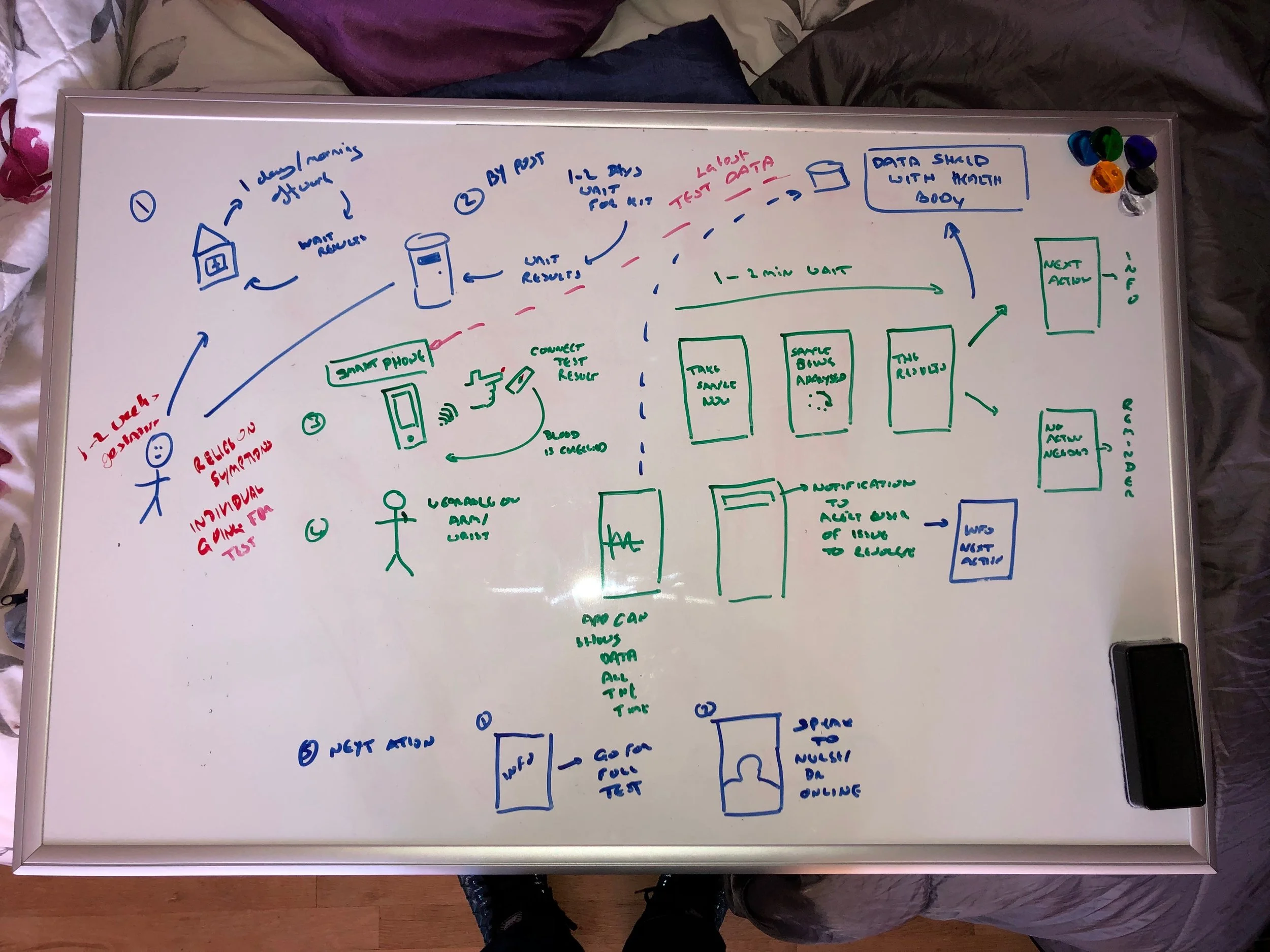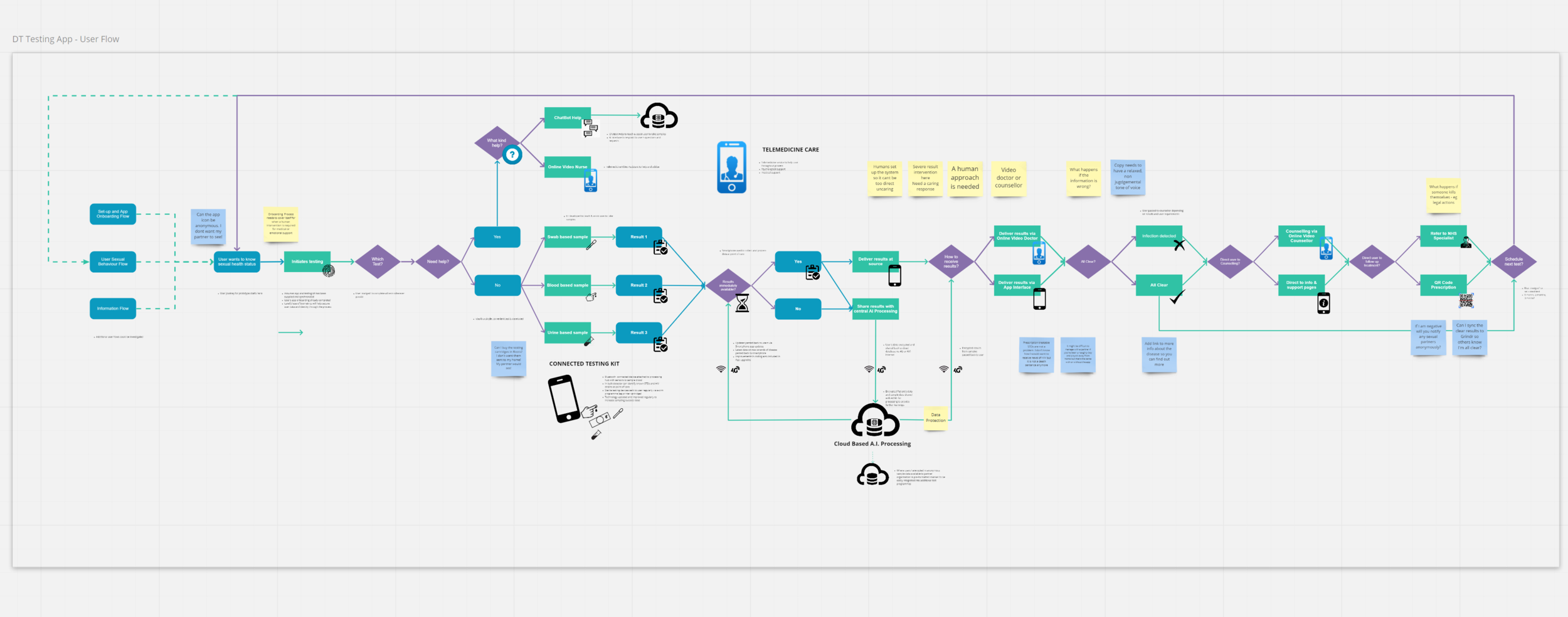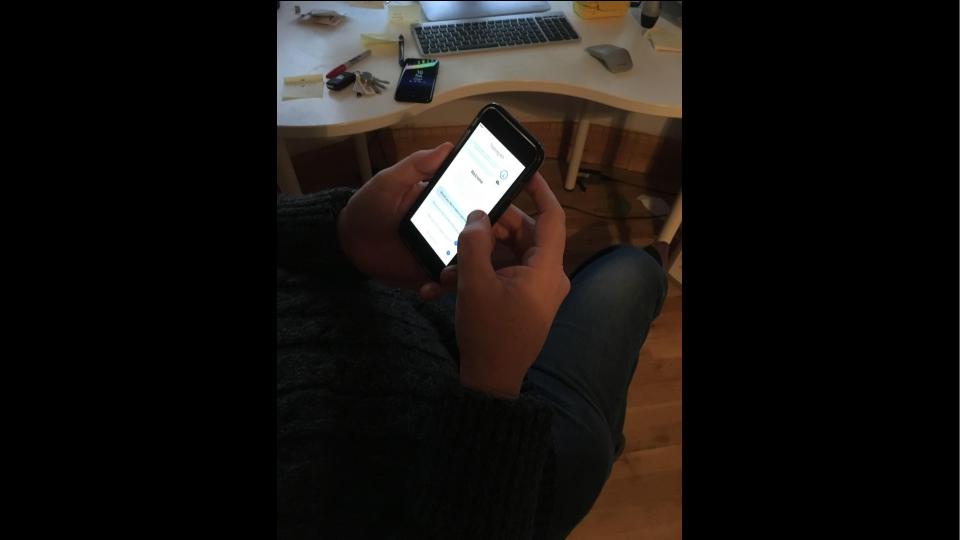How digital technology can disrupt
gay men’s sexual health services
Product Design
Introduction
As part of the Digital Technology module for my Masters, we were given an assignment to critically evaluate recent and emerging technology trends from academic and professional sources, and consider their potential disruptive impact(s) on an organisation of our choice.
I chose to focus on how technology can be used to disrupt Gay Men’s Sexual Health Services. The output for the module was in two parts; an essay looking at the trends in technology and a video including a simple prototype, user testing and evaluation which can be seen below. I was delighted to be given a Distinction for the project.
The final essay can be downloaded here.
The video can be viewed here.
Initial concepting
Following desk research into gay men’s sexual health behaviour and services, a simple concept was created on a whiteboard which incorporated the latest cutting edge technologies; blood testing via connected devices, Artificial Intelligence/Machine Learning and telemedicine.
This whiteboard concept was tested with a user who gave their initial feedback. Amends and updates were made by adding post-it notes to the board, with the prototype being iterated accordingly.
I am not confident about drawing. I have needed to become disciplined in being neat and tidy and being clear about verbalising my ideas. I have learnt to copy icons from the internet and to not overcomplicate screens, choosing to use labels with the topline concept. The detail can come along later!
User Flow
A more formal user flow was then created using Miro, a real time, online collaborative tool which I have used sucessfully on a number of client projects.
This tool enables creative, design thinking processes with remote teams, as well as being able to share complex problems and ideas back to clients and stakeholders. Teams are extremely positive about using Miro, particularly in discovery and concept stages as it helps to unite a team quickly.
This tool act as a virtual whiteboard, enabling teams to see all project thinking at a glance without having to jump from file to file.
The flow created for this project can be viewed here.
Clickable Prototype
A clickable prototype was created with Figma. This is an cloud based tool which can, again, be used collaboratively by remote teams. It is very similar to Sketch in that is allows a designer to create designs but it also allows the designer to stitch together a clickable prototype. It is also available for Mac and PC meaning that non-traditional designers like myself can jump into designing. Designs can easily be shared with stakeholder who can leave comments.
Designs can be imported from Sketch but not easily exported back out again. Final designs can be exported to dev tools like Zeplin. Further investigation into managing version control across large teams needs to be done.
I am building up skills using Figma. I am learning that managing screens and flows is crucial.
Also, one needs to be cautious about introducing new patterns to users in early concept stages.
The prototype can be viewed here.
User Testing
A further round of user testing was undertaken with two respondents. A series of tasks were set and I monitored the actions and responses. Further amends and final iterations were completed ahead of outputing screens to be used in the final video delivery.
User testing is a new skill for me. Learning to listen is a key challenge and also to be open when ideas are criticised is crucial to evolving any product
The Final Output - Video
Finally, to bring the story to life, I created a video was created using Camtasia.
I have managed Video Editors before but I had to learn to use this editing tool from scratch. After a number of technical issues meaning I could not import stock library video clips and a looming deadline for submission, I decided to create a simple slide presentation format with voice over scripted and voiced by myself.
The video can be viewed here.
Personal Reflection
I was delighted with the final output; amazed that I could pull together such an ambitious project together. Whilst I have managed teams who might complete similar projects, being responsible and accountable for content and production was a huge undertaking. There are so many things I would like to go back and improve but given the delivery timings and newness to production techniques I think it holds up well and I will be confident to approach relevant health organisations to share this idea further.






